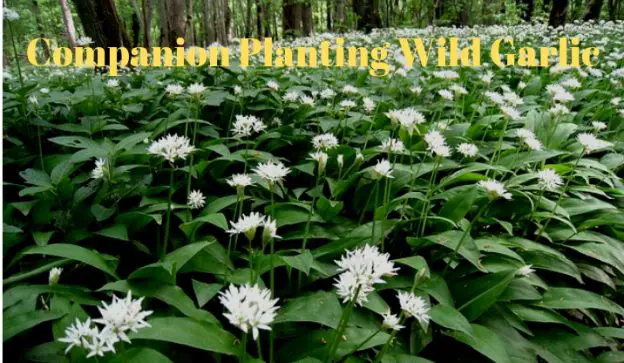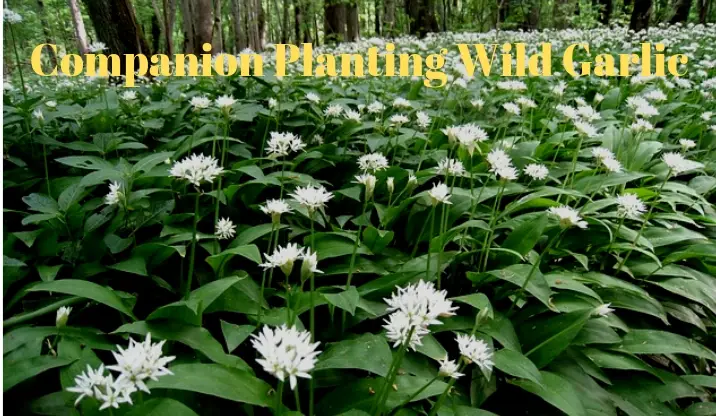Wild Garlic Companion Planting: The Ultimate Guide
Wild Garlic Companion Planting: The Ultimate Guide
Wild garlic (allium ursinum) is a hardy perennial herb that is native to Europe and Asia. It is also known as bear leek, wood garlic, ramsons, buckrams, broad leaf garlic, and hedge garlic. Wild garlic has a strong garlicky smell and flavor, and it can be used in cooking, as a medicinal herb, or as a natural insect repellent.
One of the best things about wild garlic is that it is easy to grow and care for. It is also a good companion plant for many other vegetables and herbs. In this guide, we will discuss the benefits of companion planting with wild garlic, and we will provide a list of some of the best plants to grow with it.
Benefits of Companion Planting with Wild Garlic
There are many benefits to companion planting with wild garlic. Some of the most important benefits include:
- Disease and pest control: Wild garlic has a strong scent that can repel many common garden pests, including aphids, cabbageworms, and slugs. It can also help to suppress the growth of fungal diseases, such as powdery mildew and black spot.
- Improved soil health: Wild garlic is a nitrogen-fixing plant, which means that it helps to add nitrogen to the soil. This can benefit other plants in the garden by improving their growth and productivity.
- Attracting pollinators: The white flowers of wild garlic are attractive to bees, butterflies, and other pollinators. These pollinators are essential for the production of fruits and vegetables, so attracting them to your garden is important.
- Enhancing flavor: The strong flavor of wild garlic can enhance the flavor of other vegetables and herbs. For example, it can be used to add flavor to salads, soups, and stews.
What to Grow with Wild Garlic
Wild garlic can be grown with a variety of other vegetables and herbs. Some of the best companion plants for wild garlic include:
- Fruit trees: Wild garlic can be planted under fruit trees to help protect them from aphids and other pests.
- Cabbage family vegetables: Wild garlic is a good companion plant for cabbage, broccoli, cauliflower, and other members of the cabbage family. It can help to repel pests that are common to these vegetables, such as cabbageworms and cabbage loopers.
- Carrots: Wild garlic can help to improve the flavor of carrots.
- Potatoes: Wild garlic can help to deter potato beetles and other pests that can damage potatoes.
- Herbs: Wild garlic can be grown with a variety of herbs, such as mint, rosemary, and thyme. These herbs can help to deter pests and enhance the flavor of wild garlic.
What Not to Grow with Wild Garlic
There are a few plants that should not be grown with wild garlic. These include:
- Beans: Wild garlic can stunt the growth of beans.
- Other Alliums: Wild garlic is a member of the allium family, which includes onions, garlic, and chives. These plants should not be planted too close together, as they can compete for nutrients and water.
Conclusion
Wild garlic is a versatile and beneficial plant that can be grown in many different gardens. Companion planting with wild garlic can help to improve the health of your plants, deter pests, and enhance the flavor of your vegetables. If you are looking for a way to add some extra value to your garden, consider planting some wild garlic.
Wild garlic is a versatile and hardy plant that can be grown in a variety of settings. It is also a great companion plant for many other vegetables and herbs. Some of the best companion plants for wild garlic include:
- Tomatoes: Wild garlic helps to repel pests and diseases from tomatoes, and the two plants can also benefit from each other's nutrients.
- Fruit trees: Wild garlic can help to improve the health and productivity of fruit trees by attracting beneficial insects and repelling pests.
- Potatoes: Wild garlic helps to suppress weeds and improve the drainage of soil around potatoes.
- Cabbages: Wild garlic helps to deter cabbage moths and other pests from cabbages.
- Broccoli: Wild garlic helps to improve the flavor and texture of broccoli.
If you are interested in learning more about wild garlic companion planting, I recommend visiting Gardenia Inspiration. This website has a wealth of information on the topic, including a list of plants that are compatible with wild garlic, as well as tips on how to plant and care for these plants together.
FAQ of wild garlic companion planting
- What are some good companion plants for wild garlic?
Wild garlic is a relatively easy-going plant that can be companion planted with a wide variety of other plants. Some of its best companions include:
* Currant bushes: Wild garlic can help to repel aphids, which are a common pest of currant bushes.
* Carrots: Wild garlic can help to improve the flavor of carrots.
* Chamomile: Wild garlic can help to repel pests and diseases from chamomile plants.
* Roses: Wild garlic can help to improve the growth and health of roses.
* Tulips: Wild garlic can help to deter tulip bulb nematodes.
- What plants should not be planted near wild garlic?
While wild garlic can be companion planted with many different plants, there are a few that it should be avoided planting near. These include:
* Beans: Wild garlic can stunt the growth of beans.
* Asparagus: Wild garlic can inhibit the growth of asparagus.
* Sage: Wild garlic can suppress the growth of sage.
* Parsley: Wild garlic can interfere with the flavor of parsley.
* Strawberries: Wild garlic can attract pests to strawberries.
- How far apart should wild garlic plants be planted?
Wild garlic plants can be planted about 6 inches apart. If you are planting them in a row, allow about 12 inches of space between rows.
- When is the best time to plant wild garlic?
Wild garlic can be planted in the fall or early spring. If you are planting them in the fall, they will have time to establish themselves before the winter. If you are planting them in the spring, they will start growing as soon as the weather warms up.
- How do I care for wild garlic plants?
Wild garlic plants are relatively low-maintenance. They need well-drained soil and full sun or partial shade. Water them regularly, especially during dry periods. You may need to fertilize them once a year with a balanced fertilizer.
Image of wild garlic companion planting
- Image 1: A bed of wild garlic plants with tomatoes growing nearby. The wild garlic is helping to deter pests from the tomatoes.
- Image 2: A row of carrots with wild garlic plants growing in between them. The wild garlic is helping to repel carrot flies.

- Image 3: A patch of wild garlic with lettuce plants growing nearby. The wild garlic is helping to improve the soil quality for the lettuce.

- Image 4: A bed of strawberries with wild garlic plants growing around the edge. The wild garlic is helping to keep away pests from the strawberries.

- Image 5: A pot of wild garlic with a few chives growing in it. The wild garlic and chives are both members of the Allium family and they can be planted together.

Post a Comment for "Wild Garlic Companion Planting: The Ultimate Guide"